In the past, local businesses often had a secret weapon: a fiercely loyal dog that served as both companion and protector. These four-legged guardians weren’t flashy security systems or hired guards; they were an integral part of the team.
From hardware stores to barbershops, these dogs greeted regulars, monitored delivery trucks, and kept a watchful eye on anyone who approached. Their presence was more than just a symbol of friendship; it was a form of security, reliable and often unnoticed.
But as the world shifts toward more modern security systems, the question arises: Can small dogs still hold their own as effective guardians? Surprisingly, the answer is yes. While size might suggest otherwise, many small breeds possess the sharp instincts, courage, and loyalty required for excellent protection.
In this article, we explore the best guard dog breeds that offer protection, loyalty, and security, proving that other traits don’t matter when it comes to their guard duty, which matters most.
Best Guard Dog Breeds for Small Business Owners
Choosing a guard dog for your company requires balancing protective instincts with a temperament that fits your work environment.
1. German Shepherd
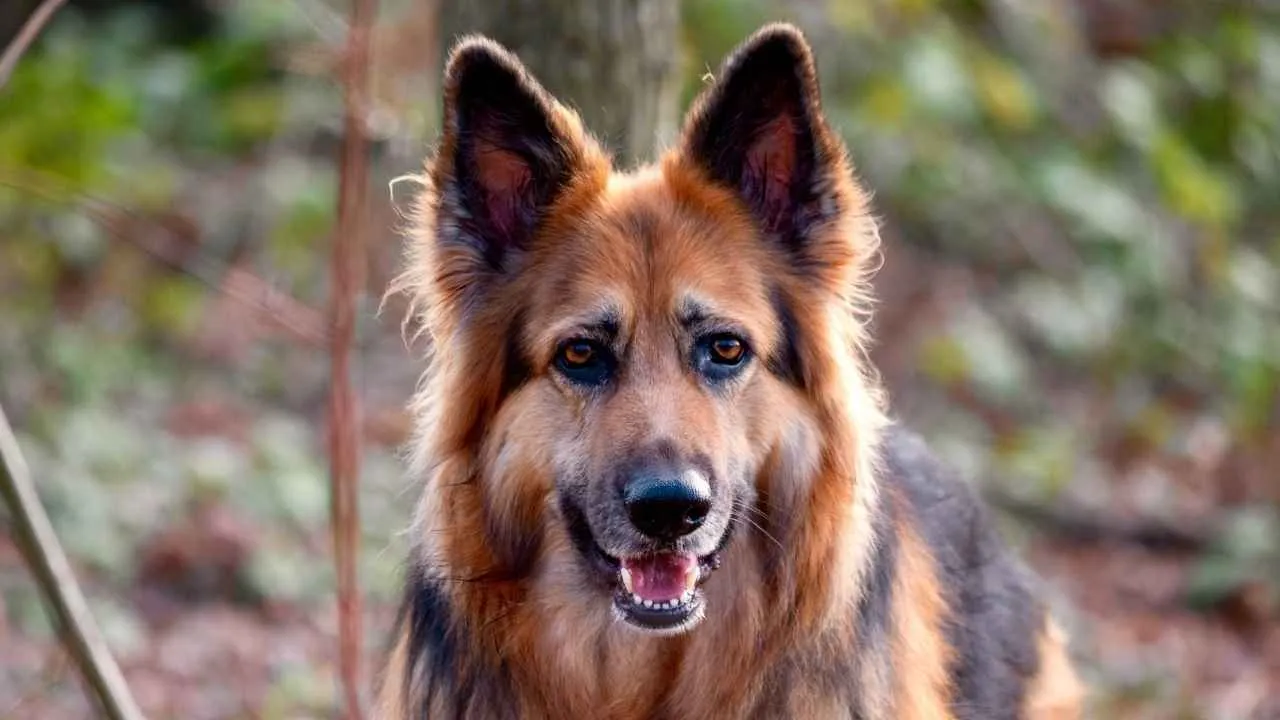
Personality: A Balance of Loyalty and Independence
German Shepherds are known for their impressive blend of loyalty and independence, making them exceptional companions. They are incredibly devoted to their families and thrive on forming strong bonds with their owners.
Despite their affection, these dogs are not overly clingy; they’re confident, capable, and can often make decisions on their own when the situation calls for it.
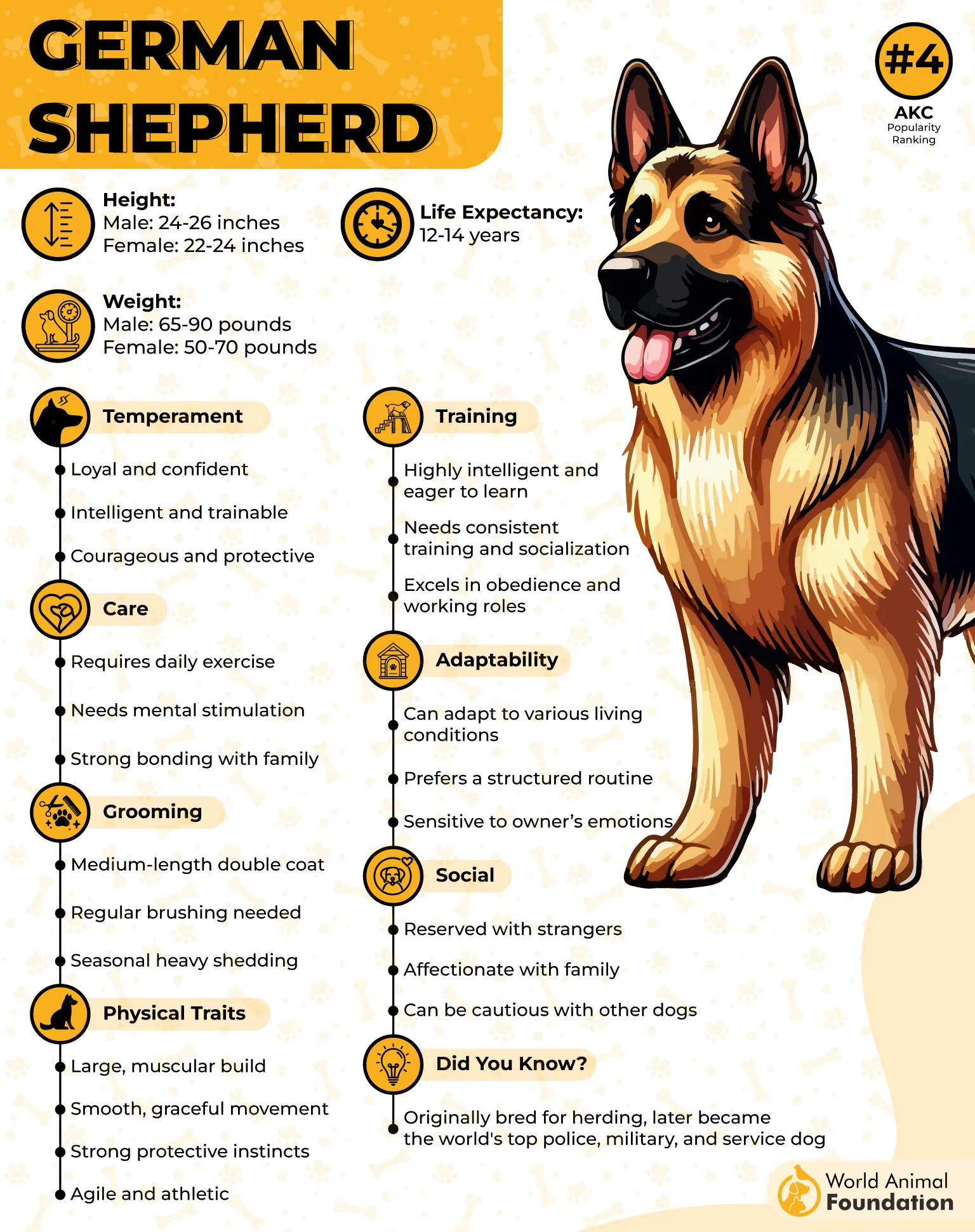
Guarding Instincts: Watchful, Brave, and Always Ready
This breed’s natural territorial instincts are one of its most defining features. German Shepherds are quick to alert their owners of anything unusual, barking in response to perceived threats without excessive noise.
Their bravery and confidence ensure that they take on the role of protector without hesitation, making them an ideal guard dog for businesses and homes.
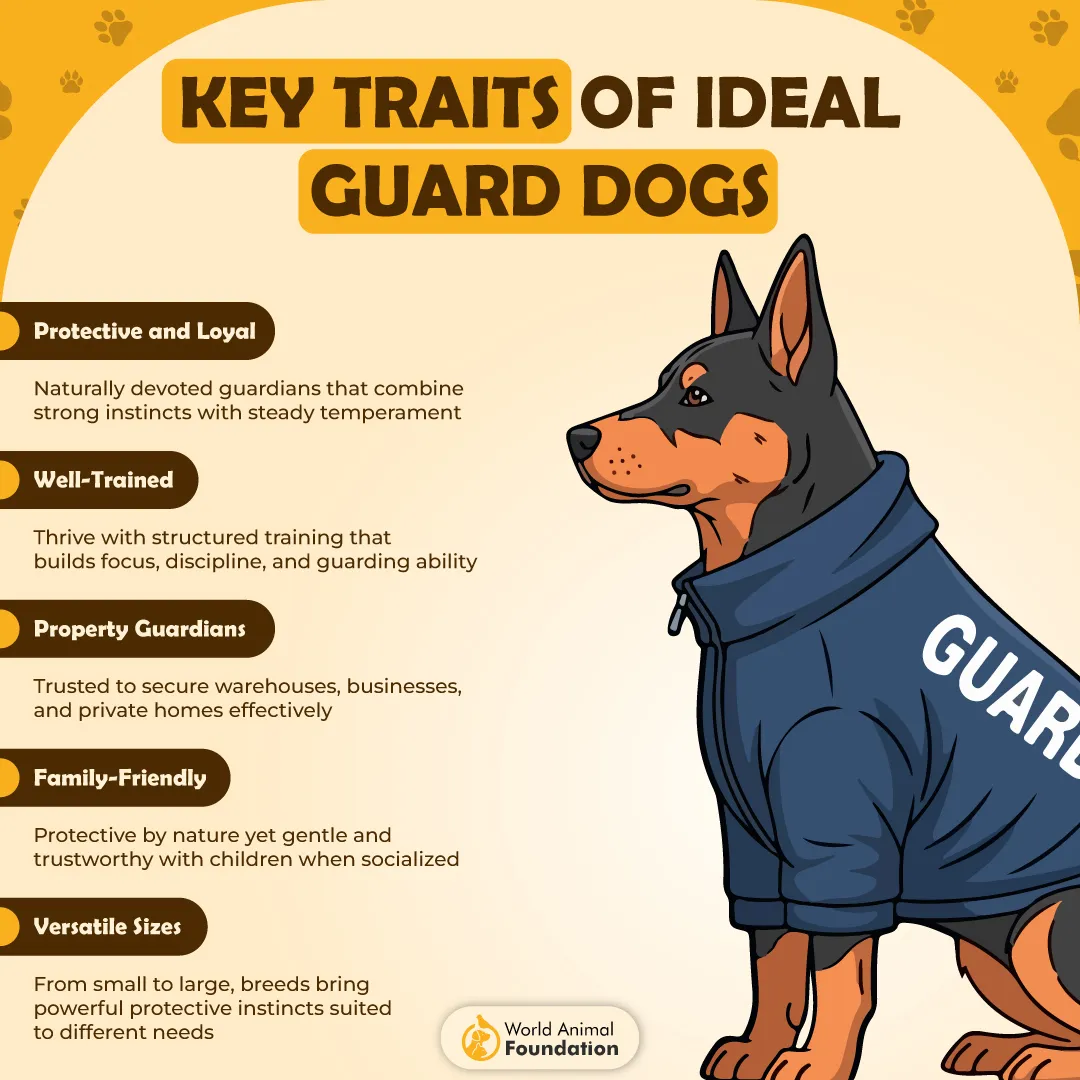
A Rich History: From Shepherd to Soldier
The German Shepherd’s origins can be traced back to 1899, when a German cavalry captain named Max von Stephanitz began developing the breed for herding purposes, according to Britannica.
Impressed by a strong, energetic dog he saw at a show, he decided to create a new breed focused on intelligence, strength, and trainability. Over time, these traits made German Shepherds invaluable in military, police, and rescue operations.
2. Doberman Pinscher
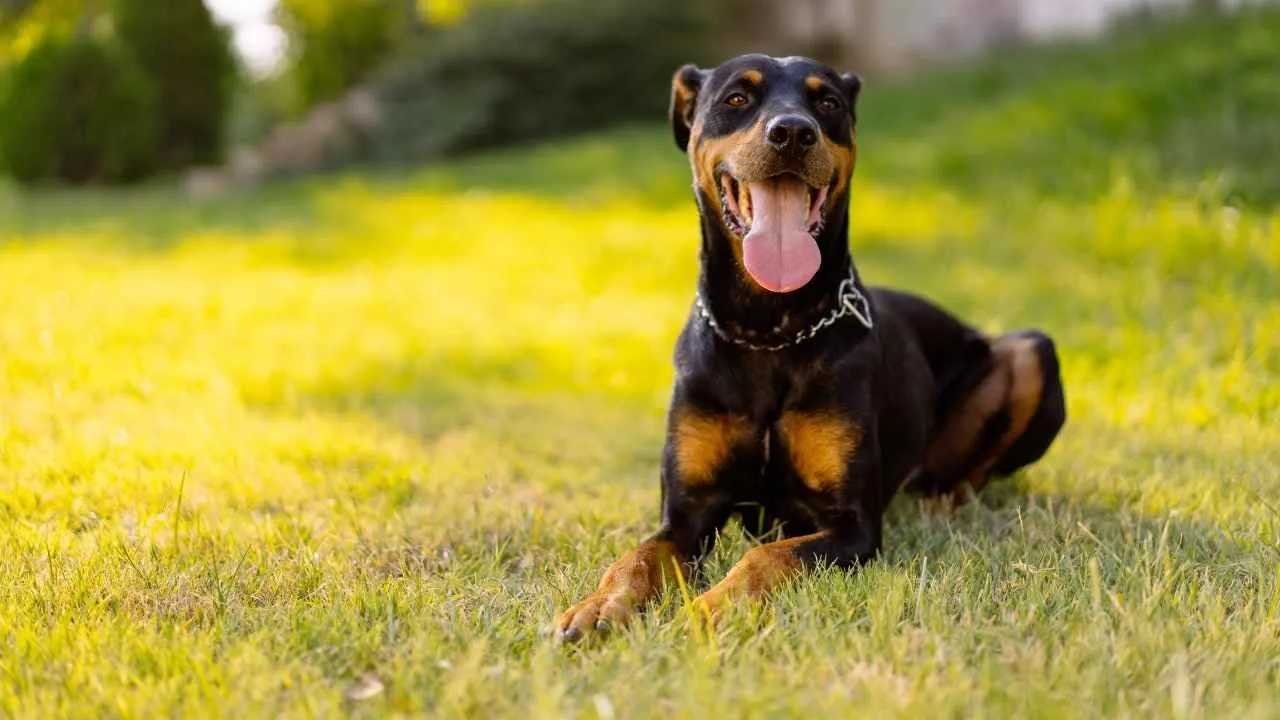
The Origins: A Tax Collector’s Legacy
The Doberman Pinscher’s roots can be traced back to the late 1800s, when a German tax collector named Louis Dobermann bred the first of the breed.
PetMD mentions that by crossing several breeds, including the now-extinct Old German Shepherd, the German Pinscher, the Black and Tan Manchester Terrier, and the Greyhound, he created a dog known for its guarding instincts, agility, and intelligence, which is also considered among the smartest dog breeds.
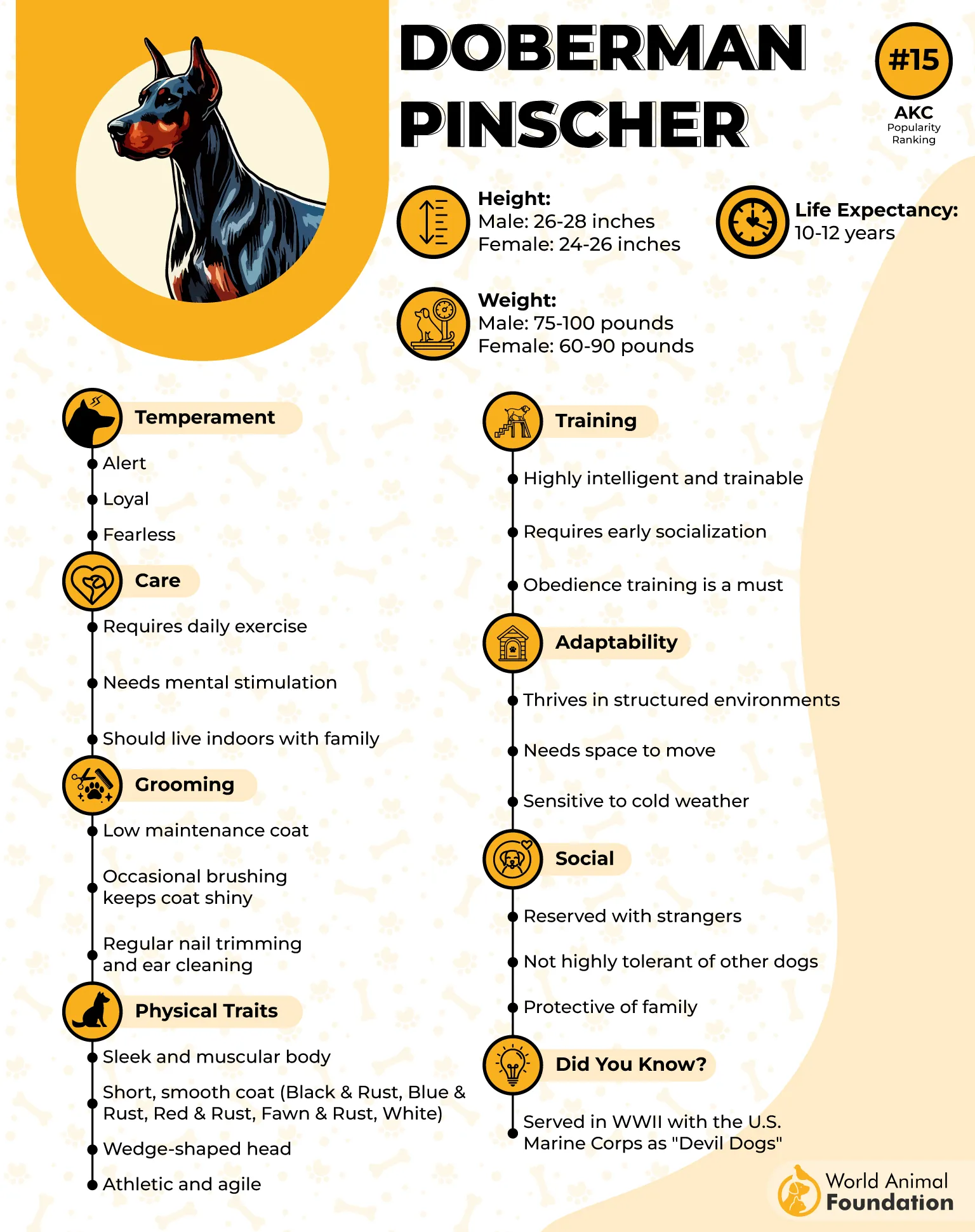
High-Energy Lifestyle: Always on the Move
With a boundless energy reserve, the Doberman Pinscher requires plenty of physical exercise to stay happy and healthy. Their curiosity and intelligence also make them highly adaptable to mentally stimulating activities like obedience training, agility, or interactive games.
Without sufficient exercise and mental challenges, they may resort to undesirable behaviors, such as chewing or digging, to burn off excess energy.
Low Maintenance with a High-Impact Coat
Despite their sleek appearance, Dobermans are relatively low-maintenance when it comes to grooming. Their short coat requires minimal upkeep, though regular brushing can help reduce shedding and keep their coat in top condition.
On the downside, their skin is sensitive to extreme temperatures, so care should be taken to ensure they’re not overexposed to heat or cold, especially during outdoor activities.
3. Boxer
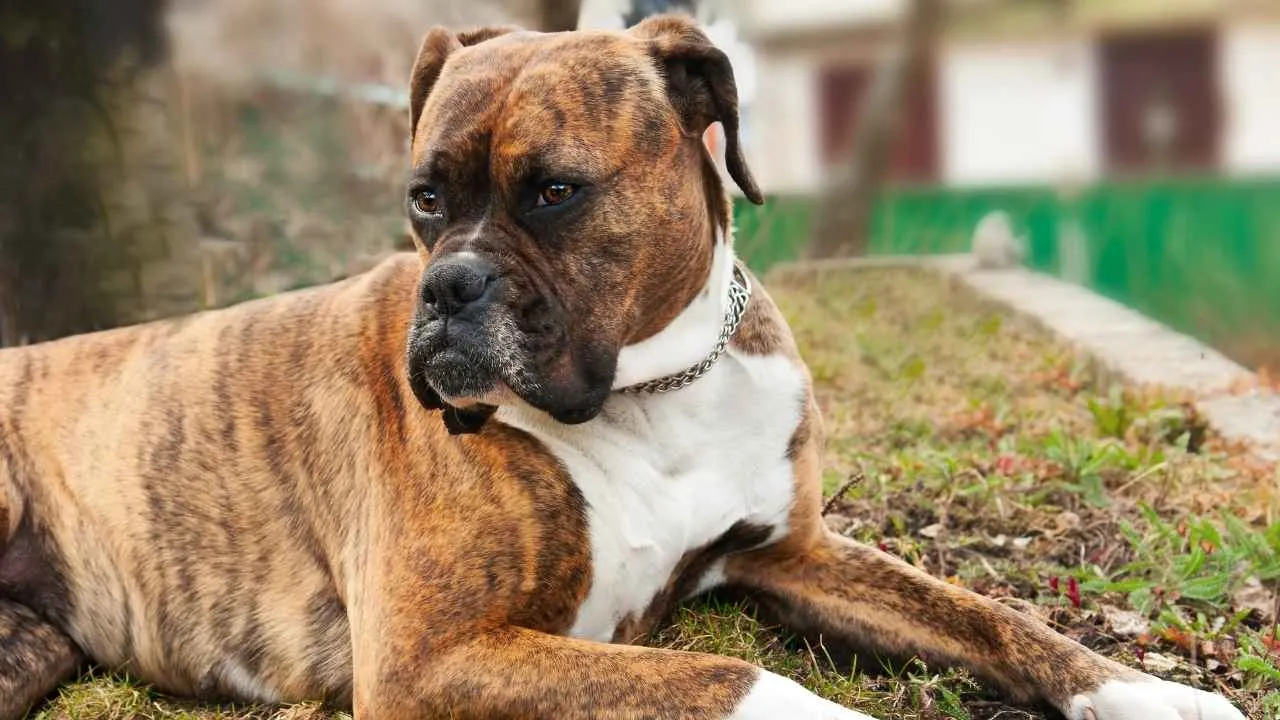
A Regal Presence: Boxer’s Distinctive Look
Boxers are instantly recognizable thanks to their bold, square-shaped heads and strong, muscular build. With their undershot jaw and blunt muzzle, they exude an air of confidence and power.
Their compact feet with arched toes, coupled with their docked tails and traditionally cropped ears, contribute to a look that balances elegance with strength.

Coat Colors and Grooming: Short, Sleek, and Stylish
The Boxer’s coat is short and sleek, shedding moderately throughout the year. Their striking colors range from rich fawn to brindle, with many sporting a black face mask and white markings on their chest and paws.
While their grooming needs are relatively low, regular brushing helps manage shedding and keep their coat shiny, though they tend to drool and snore, which is just part of their charm!
Vocal, Loyal, and Always Protective
Boxers are not known for excessive barking, but when they do speak up, there’s usually a good reason. Their distinctive growls and “talking” noises are often their way of communicating, showcasing their vocal personalities.
As per Hill’s Pet, Boxers are a muscular dog breed and protective family members, forming strong bonds with their loved ones, especially children.
4. Appenzeller Sennenhund

A Need for Space and Activity
Due to their high energy levels and strong work ethic, the Appenzeller Sennenhund is best suited for homes with large yards or access to open space. Apartment living can be too confining for this breed, as they need room to run and play.
Without sufficient physical activity, they can become restless and potentially destructive, so active owners with plenty of time to dedicate to exercise are ideal for this breed.
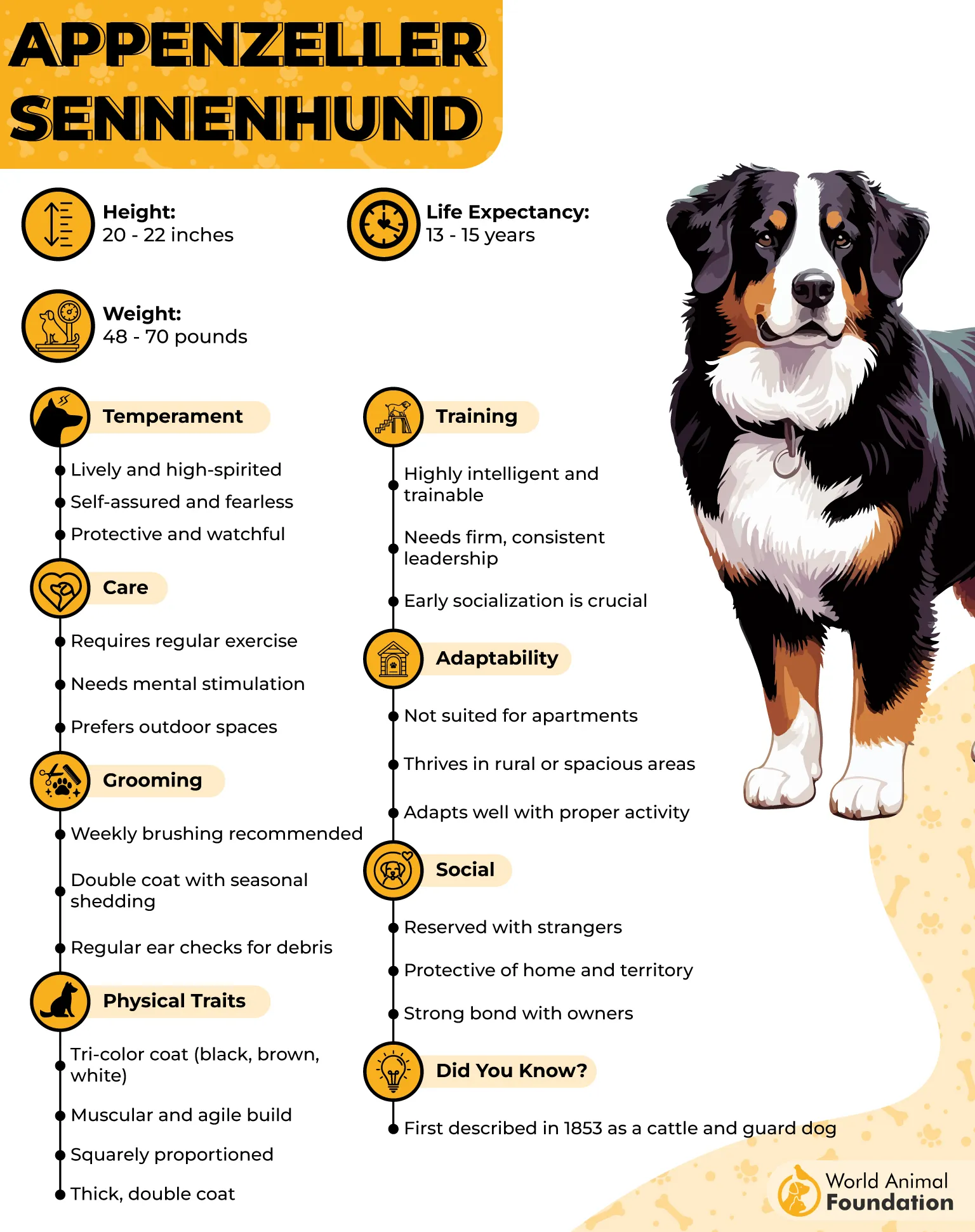
Grooming: Easy Maintenance with Seasonal Shedding
The Appenzeller Sennenhund’s coat requires minimal grooming, with brushing once a week to keep it in top shape. However, they do experience seasonal shedding, especially in the spring and fall, when you’ll need to brush more frequently to manage loose fur and prevent tangles.
Despite the shedding, their grooming needs are straightforward, making them relatively easy to maintain for an active breed.
A Sturdy Build: Strength and Agility in Balance
The Appenzeller Sennenhund is a medium-sized dog breed with a nearly square frame, exuding both strength and agility, as per the AKC.
Their muscular build is complemented by a sleek, tri-colored coat that highlights their versatility as a working dog. This breed is not just built for beauty but for performance, excelling in roles like herding, guarding, and even search and rescue.
5. Giant Schnauzer

A Natural Protector: Guarding Instincts to the Core
Giant Schnauzers are not just strong and active; they also have a strong instinct to protect. According to WebMD, it was originally bred to guard farms.
They are naturally alert and fearless, making them excellent guard dogs. Whether it’s protecting their family, home, or territory, Giant Schnauzers are instinctive and reliable in their protective roles.
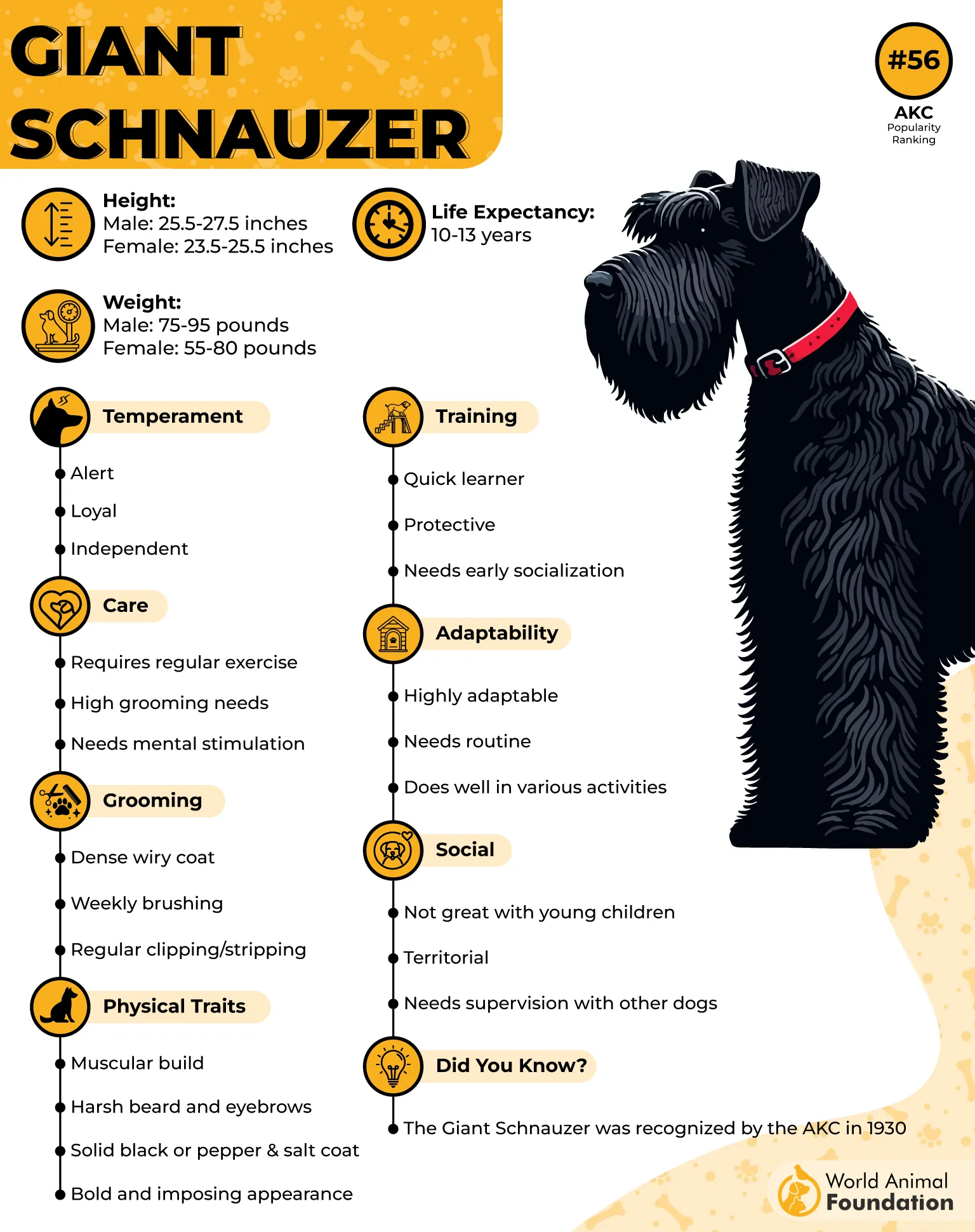
Built for Work: Muscular, Agile, and Resilient
With their nearly square build, Giant Schnauzers are impressive in both appearance and function. Bred for farm work, they possess a unique combination of strength, agility, and endurance.
Their muscular frame and weather-resistant coat help them perform well in demanding outdoor environments, whether it’s herding cattle, pulling carts, or keeping watch over property.
The “Giant” Personality: Full of Life
Despite the name, the Giant Schnauzer isn’t necessarily a giant dog, but it is the largest among the schnauzer family. With a highly spirited personality and sharp intelligence, they thrive on attention and interaction from their owners.
These dogs need stimulation and plenty of engagement to keep their minds sharp and prevent boredom, making them better suited for active and experienced owners.
6. Belgian Malinois

Versatility and Work Ethic: The Malinois in Action
Often chosen by police and military units worldwide, the Belgian Malinois excels in a variety of roles thanks to its strength, stamina, and eagerness to please. Whether it’s tracking, guarding, or serving as a herding dog breed, the Malinois thrives on having a job to do.
Their high trainability also makes them standouts in agility, obedience, and other competitive canine sports, showcasing both their mental and physical power.

Coat and Appearance: Sleek and Strong
The Belgian Malinois has a short, dense coat that is typically 1 to 2 inches long. Its coat ranges in color from yellowish-brown to mahogany, often with black-tipped hairs, and a characteristic black mask and ears. This breed’s sleek appearance is a reflection of its athletic build—lean, strong, and built for speed and endurance.
High-Energy Needs: More Than Just a Walk in the Park
This breed is not your average protection dog when it comes to exercise. Daily walks simply won’t cut it for a Belgian Malinois; they need intense physical and mental stimulation. A typical day for a Malinois could involve a five-mile run or high-intensity activities like hiking, biking, or agility training.
7. Cane Corso
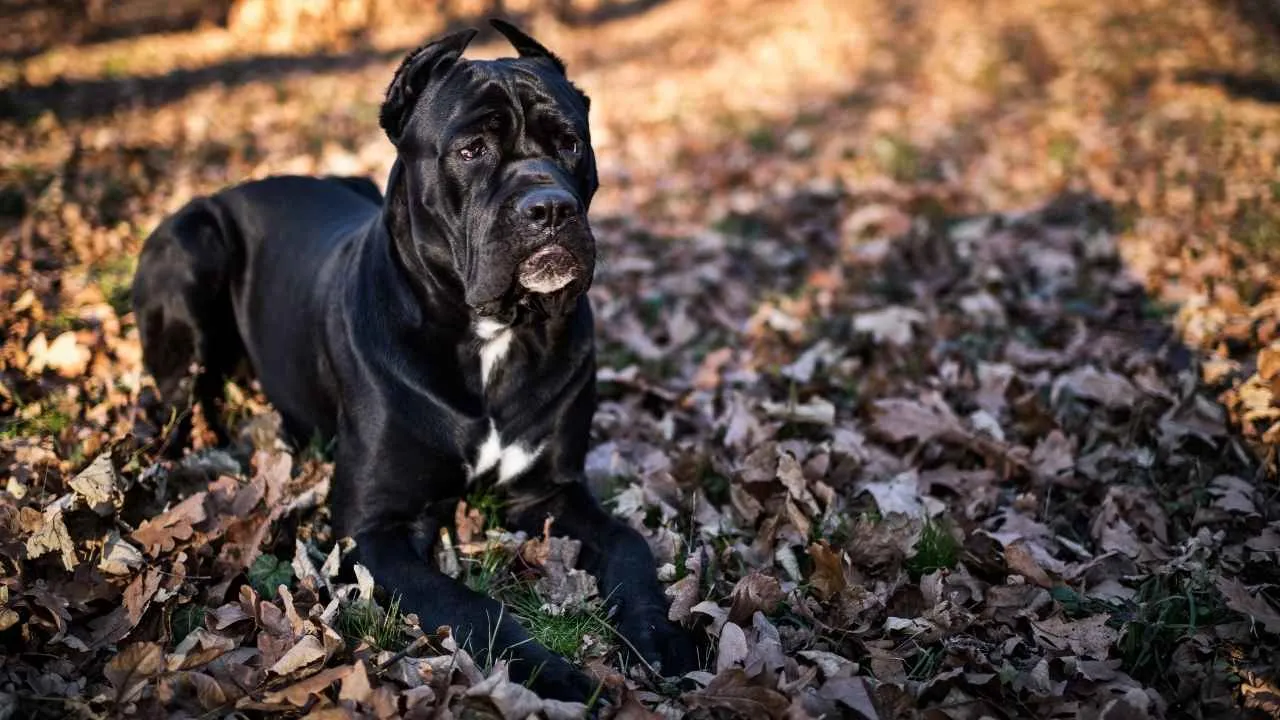
Exercise Requirements: Two Hours a Day Keeps Them Happy
With their athletic build and working background, Cane Corsos require around two hours of exercise every day. A combination of brisk walks, jogs, and playtime in secure, off-leash areas is ideal.
Additionally, incorporating short training sessions or puzzle games throughout the day provides them with the mental stimulation they crave, ensuring they remain both physically fit and mentally sharp.
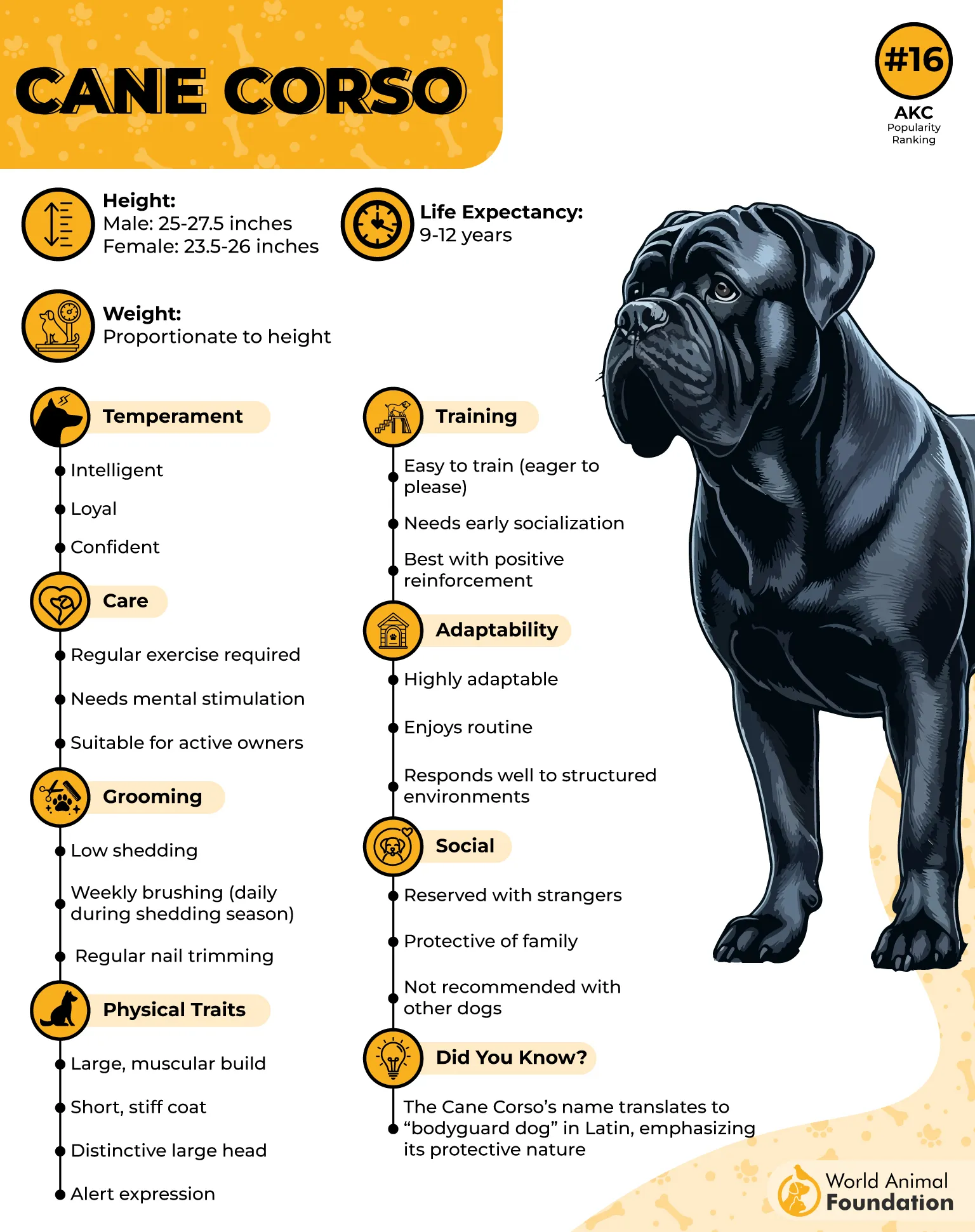
A Beautiful, Varied Coat: Colors and Grooming
Cane Corsos have a short, dense coat that’s easy to groom but still sheds moderately. The most common colors are black and black brindle, though they can also be seen in chestnut brindle, fawn, gray, and red. While their grooming needs are minimal, regular brushing helps manage shedding and maintain a healthy coat.
Bred for Work: Keeping the Cane Corso Active and Engaged
Having been bred for both war and farm work, the Cane Corso’s instincts drive them to stay active. These dogs require significant physical and mental stimulation, meaning long walks and playtime aren’t just a luxury; they’re a necessity.
Cane Corsos love participating in family activities and thrive when they have a job to do, so don’t be surprised if they get restless without enough to focus on.
Wrapping Up
Choosing the right guard dog for a small business owner requires a deep understanding of the breed’s natural instincts, needs, and temperament. Dogs like the Belgian Malinois, Cane Corso, and Boxer are not only protective but also require basic obedience training and early socialization to develop into well-rounded companions. Without proper training and socialization, even the most gentle giants can become overly territorial or aggressive, undermining their potential as protective dogs.
Dog owners must recognize that these breeds thrive on consistency, mental stimulation, and positive reinforcement. They are quick learners and can become deeply devoted to their families with the right approach. Proper training, particularly in the early stages, helps to harness their protective instincts and ensures they behave appropriately around both familiar faces and strangers.
By committing to early socialization and incorporating regular training sessions, these breeds can evolve from loving family members to dependable guardians. With patience, dedication, and a focus on meeting their physical and mental needs, dog owners can enjoy the benefits of a loyal, alert, and protective dog, creating a safer and more secure environment for their business and home.


